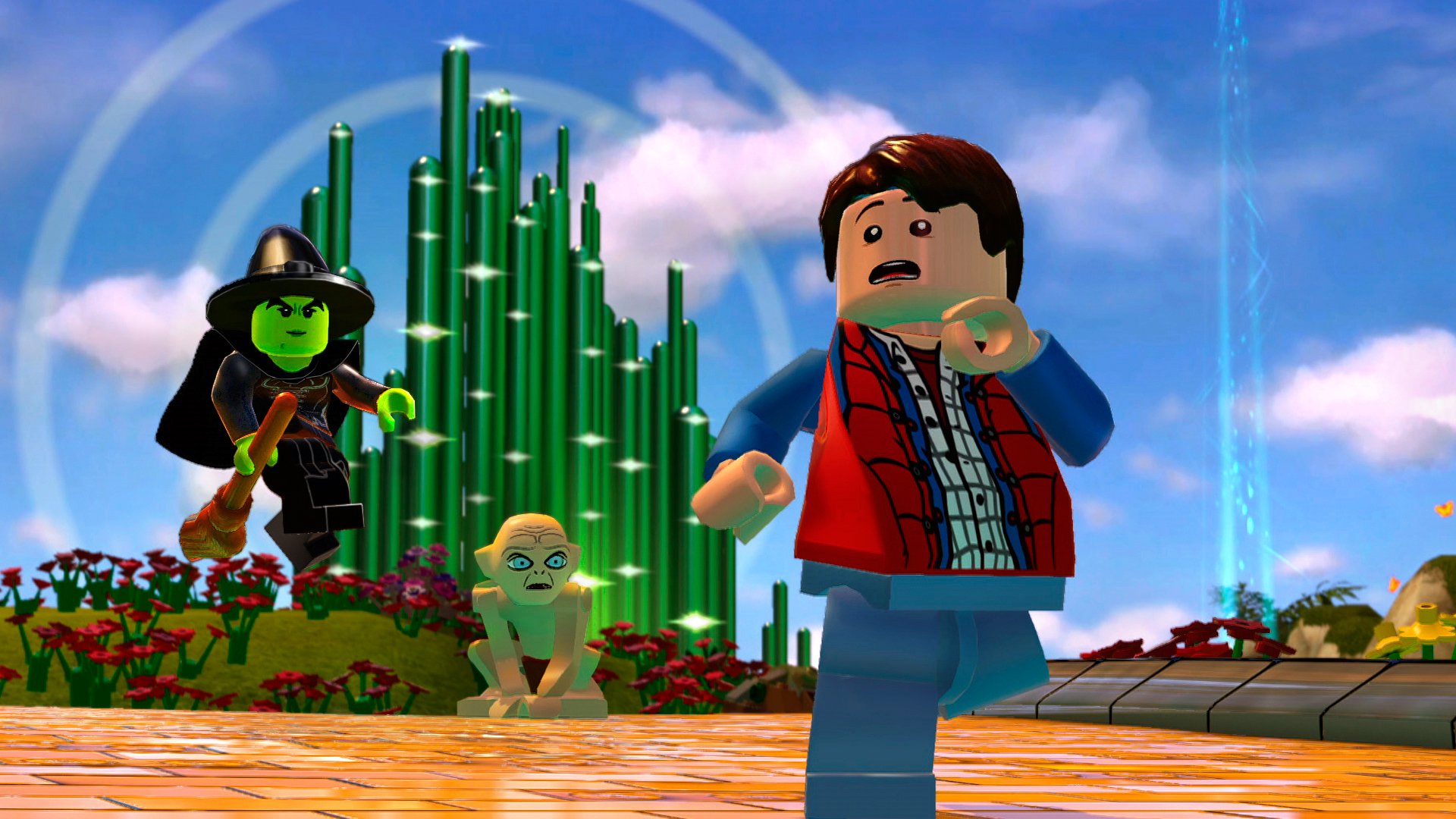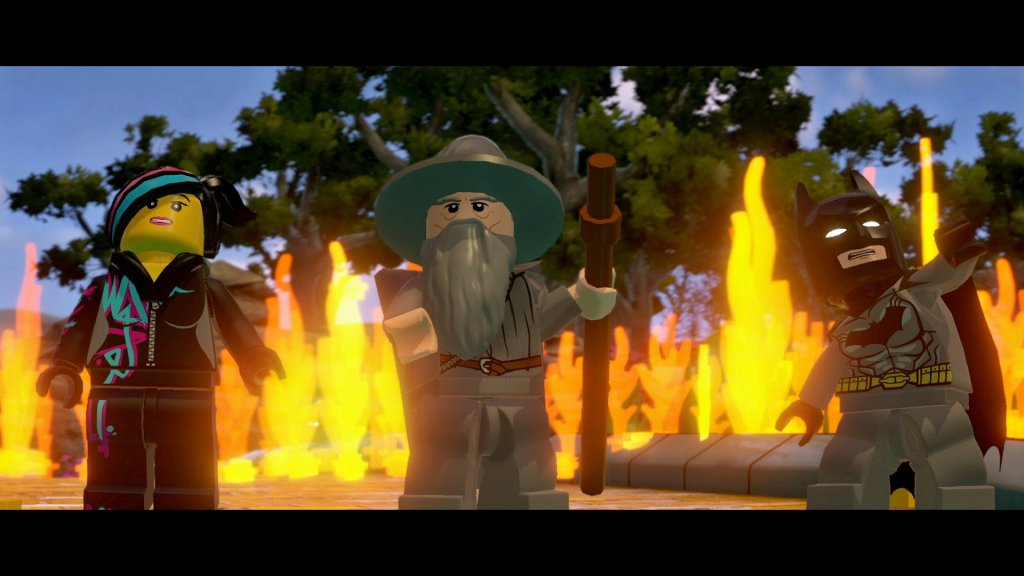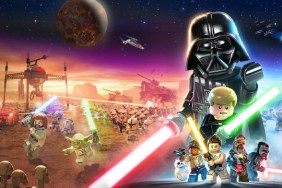The LEGO game that The LEGO Movie deserved.
The LEGO Movie introduced, especially in the section of the council meeting in Cloud Cuckoo Land, that all LEGO worlds are integrated and the characters, regardless of franchise can meet and interact. The LEGO Movie Video Game was a straight adaptation of the movie that didn’t play too much with this idea.
Enter LEGO Dimensions, where it appears that TT Games took this idea and combined it brilliantly with what they termed the “Toys-to-Life” game genre (Skylanders, Disney Infinity) but with a key difference: The toys are LEGOs. The LEGO mini-figures used in the game are real LEGO figures that have to be built from component blocks that, when placed on their RFID-enabled stand, can be used in-game when placed on the LEGO Pad portal. With a large number of characters available on the LEGO pad at once, as a matter of fact, you often have to use 3-4 at once to complete individual puzzles.
The LEGO Dimensions starter pack comes with the game, the Toy Pad portal, Bricks to make the Dimensions Gateway, DC Batman, Wyldestyle (from The LEGO Movie), Gandalf, and mini-vehicle Batmobile (built from scratch from component bricks). However, the game moves across a ton of different genres and titles, each with their own LEGO mini-figure characters and styles and levels: Doctor Who, Scooby Doo, The Simpsons, Back to the Future, Portal, and LEGO-specific franchises like Chima and Ninjago.
The game also brings the player to classic film franchises like The Wizard of Oz (depicted amazingly in LEGO form) where each environment has different rendering and lighting—the Scooby Doo level, for instance, is cel-shaded and features classic Scooby Doo villains from the 1960s show. When Wheatley showed up in the Portal level (and then GLaDOS) I think we all collectively squeed. The mix of playing with the toys in real life as part of the game and in-game as a means of integration made this one of my two favorite games I got to play this E3.
However, what impressed me even more was the gameplay. While there were still tasks that could only be completed by certain characters, which abilities were active sometimes depended on their placement on the Lego Pad. With three different colored areas of the board, moving the physical mini-figures on the Lego Pad could change their properties or location in-game, adding to the immersion of the Toys-to-Life puzzle in a way that no other game has managed.

In classic LEGO gameplay, characters with different sizes are necessary to access different locations. Dimensions uses the LEGO pad color areas to change the size based on size-based challenges. When these are combined with puzzles that make sense within the level itself—as in a Portal level, where three different kinds of Lego Pad challenges were necessary to use prisms to redirect a laser beam to destroy LEGO Portal turrets—it made for the Toys-to-Life gameplay that integrated both real-world and in-game interactions with the game.
Perhaps the most immersive element of the game was the use of the Batmobile toy. In one section, the game required a different vehicle with other abilities to be used in the level. At this point, classic LEGO instructions came up on screen to disassemble the Batmobile vehicle toy and to reassemble it using the same parts in a different configuration to be able to use new abilities, after which the RFID chip in the stand for the vehicle could be re-coded by the LEGO Pad to identify it as the new vehicle.
Ostensibly, the player could just re-encode the RFID chip without rebuilding the LEGO vehicle, so the game is trusting that the player wants to play with LEGOs in the real world as well in-game. But this mix of in-game and real-world play is what really sets LEGO Dimensions apart from other Toys-to-Life games. While it seems a small thing, having to fulfill a puzzle by moving different characters on the LEGO Pad or finding a missing item in level with a Hot-or-Cold game that uses changing LEGO Pad colors to tell you how close you are is super effective.
Additionally, no other Toys-to-Life game so thoroughly mixes franchises. Skylanders now has a few characters from known franchises—Spyro and the new Nintendo Bowser and Donkey Kong figures, and Disney is leery of letting their characters play in each other’s worlds in their playsets—but LEGO Dimensions actively embraces this idea. The trailer shows off the contentious meeting between the DC Batman (Kevin Conroy) and LEGO Movie Batman (Will Arnett) with a predictable slap-fight results; or when the Wicked Witch makes a comment about Scooby Doo (“I’ll get you, my pretties, and your giant dog, too!”). This really serves the series by allowing players to play in-game the way they play with their toys in real life.
In short, LEGO Dimensions is a solid leap forward for both LEGO games and the Toys-to-Life genre in general, bolstering both in-game and real-world play in the same gaming experience, while interacting in the same way that children actually do with their toys. In this sense, it may also be the most adult Toys-to-Life game, with franchises that are most popular with adults, and more challenging gameplay and puzzles than in standard LEGO and other Toys-to-Life games.
Lego Dimensions will release on September 27th on Xbox 360, Xbox One, PS3, PS4, and Wii U.







